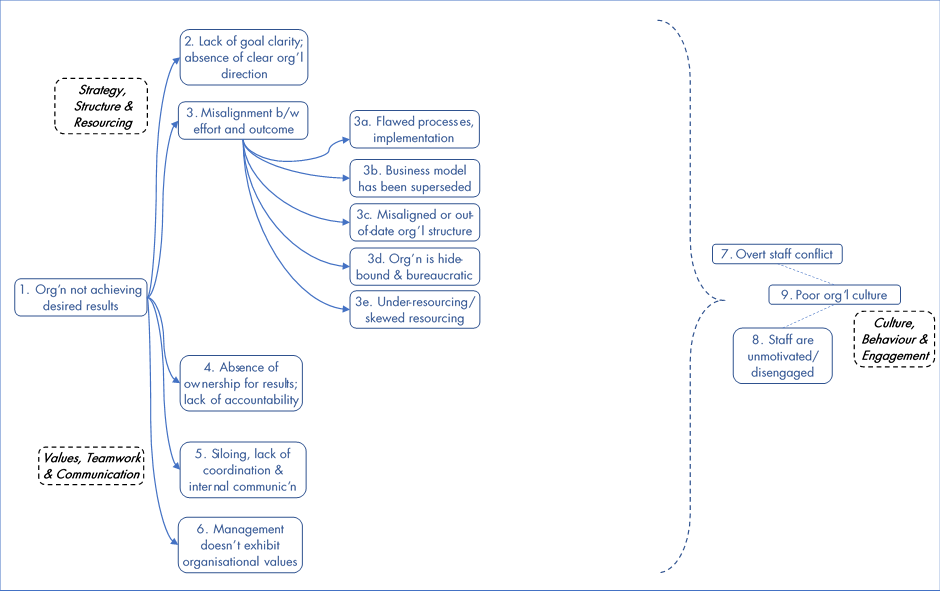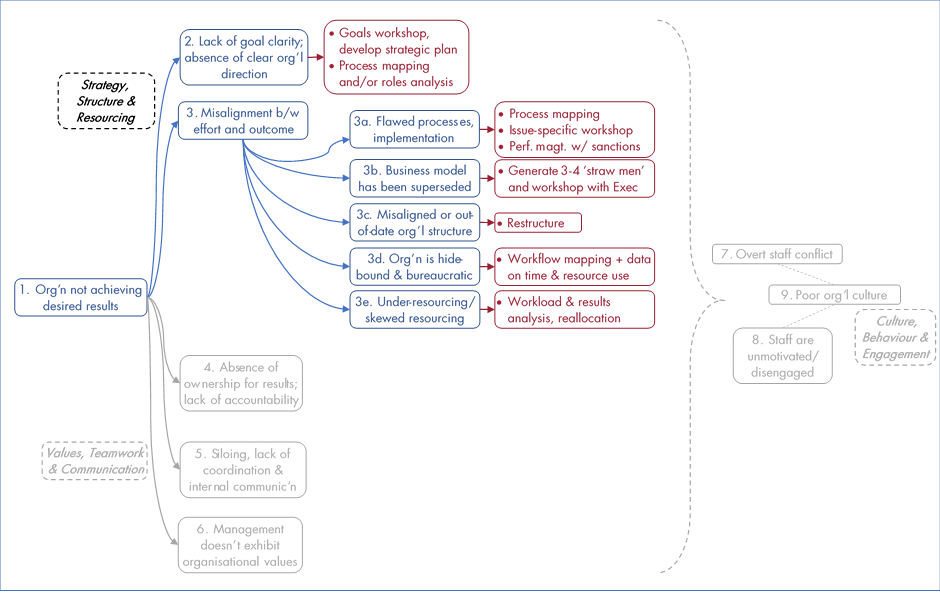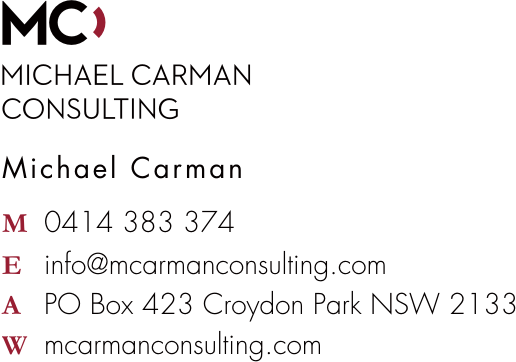Your 2020 Management Ready Reckoner – Part 1: Strategy, Structure & Resourcing
Australia is on fire as the climate warms and high temperatures interact with prolonged drought to create conditions that lead to bushfires of unprecedented scale and intensity.
The US President is being impeached in the face of substantial and credible evidence of high crimes and misdemeanours, but he will probably not be removed from office.
A new pandemic is spreading and the World Health Organisation has declared it a public health emergency of international concern.
Welcome to 2020.
So now is a good time to ask: what shape is your organisation’s risk management in? Have your risk management people captured all foreseeable risks in a risk register, which is regularly monitored and updated? Does your organisation have disaster recovery (DR) and business continuity plans (BCPs) in place? Are they up to date? And have they been tested?
Even a desk-based test of risk plans is better than nothing: a few years ago I assisted a multi-agency Government organisation do a desktop review of their business continuity plans. We ran scenarios around pandemics (the bird flu scare was still a recent memory) and terror attacks. We did it because we had to: there was a directive from central government. The exercise came into its own … especially for the agency for which the BCP test had helped bolster the case for getting remote work software for staff if they were prevented from coming in to the office: that agency was in proximity to the Lindt café siege in 2014. Far from being an academic exercise, the BCP test was highly useful.
So, let’s take this rather inhospitable start to the decade as a call-to-arms to leaders and decision-makers to ensure your risk management mechanisms are in place, up to date, and actively utilised. Call me (0414 383 374) or drop me a line by return email if you need a hand.
We can negotiate all these risks the same way we do for so much of management: by collaboratively scanning and understanding the environment, and adapting to it with vigilance and intentionality.
* * *
I would like to kick off this year’s newsletters with a short series providing a ‘ready reckoner’ for key management issues.
The starting point is that the organisation is not achieving the results it would like to (in the diagram below, the left-most bubble: number 1). With the logic moving from left to right, this could be due to a number of factors: a lack of goal clarity or absence of clear organisational direction (bubble number 2) or a misalignment between effort and outcome (bubble number 3).

This latter cause in turn breaks up into a number of possible options: the misalignment between effort and outcome could be attributable to:
- An absence of process and/or poor implementation (3a)
- A business model which has been rendered obsolete (3b)
- An organisational structure which inhibits cooperation and collaboration between divisions, either because it is out of date, or wrongly designed in the first place (3c)
- The organisation being hide-bound and bureaucratic (3d) or
- Key activities are under-resourced, or resourcing is skewed (3e).
Collectively the causes in bubbles 2 and 3 could be characterised as shortcomings in Strategy, Structure & Resourcing.
There are other possible causes of the organisation not accomplishing its desired results: there could be problems in the areas of Values, Teamwork & Communication (numbers 4 to 6) or Culture, Behaviour & Engagement (numbers 7 to 9). We’ll deal with those in future newsletters.
Strategy, Structure & Resourcing Problems … Solved
Where to from here?
I’ve added my recommended solutions for dealing with the problems, shown in the diagram below: problems are in blue, solutions are in red.

Establishing Organisation Direction
To deal with the lack of goal clarity or absence of clear direction (item 2), I recommend a collaborative goal-setting effort. A workshop is the typical vehicle for such an exercise, and an efficient one at that, allowing collective thinking in an accelerated way. One of my major findings in facilitating many of these in recent years is that goals are most usefully understood not as isolated headline items, but as a system which must be unpacked and articulated, with intermediate and final goals shown visually. Separating means and ends is vital to articulating the goals system: this has always been a productive exercise in my experience.
If goals have been set but people still don’t know what they’re supposed to be doing, process mapping and/or an analysis of jobs and roles will be in order.
Aligning Effort and Outcome
As we saw, if organisational efforts are not yielding desired outcomes, this could have a number of causes.
- If the organisation has an absence of process, or its implementation is wanting (item 3a) I recommend process mapping to develop and agree these. As is often the case, undertaking this as a collaborative effort will both accelerate the development of, and agreement to, such processes. Relatedly, an issue-specific workshop to resolve particular blockages, if it involves representatives from all affected divisions, is another useful means of improving implementation. If implementation is falling down because individuals are not performing or are not being held accountable for their results, putting a formal performance management system in place may be the order of the day.
- If the organisation’s business model is out of date (item 3b) a new business model will have to be generated. There are a couple of ways to do this. One involves mapping the organisation’s business imperatives, and its core competencies, and then transplanting the latter under the former to see which business imperatives are supported by which competencies. Another is to brainstorm and evaluate three or four different possible business models as ‘straw men’ which, along with the status quo option, are collaboratively assessed by the leadership team against pre-determined decision criteria (revenue-generating potential, cost of implementation, need for new IT investment, potential for HR disruption, etc.) with the best overall candidate selected accordingly.
- If the organisation’s structure inhibits cooperation (item 3c) a restructure is called for. Note that a restructure is the solution to a misaligned structure, yet so many organisations reach first for a restructure without properly assessing whether this is the right solution for the problem they’re confronting.
- An organisation is hide-bound and bureaucratic (item 3d) if business goals have been lost, or means prevail over ends. The solution in such cases is to map workflows (incorporating data on time and resource usage) so that blockages and impediments can be identified. Another benefit of workflow mapping and process mapping is that it creates the setting in which the underlying aim of any organisational procedure (‘Why do we do this?’) can be identified and evaluated.
- Finally, if inadequate resources have been allocated to a particular task or area or the allocation has been skewed (item 3e) an analysis of workload and budget to rebalance resourcing is in order. Activity-based costing, and internal or external benchmarking can also be of use here.
I hope this ready reckoner of strategy, structure and resourcing solutions has been useful. Next month I will outline my recommended solutions for values, teamwork, and communication.
If you’d like a hand, please contact me … but my schedule is starting to fill so please contact me sooner than later if you’d like assistance.
Warm regards,
Michael

© Michael Carman 2020
